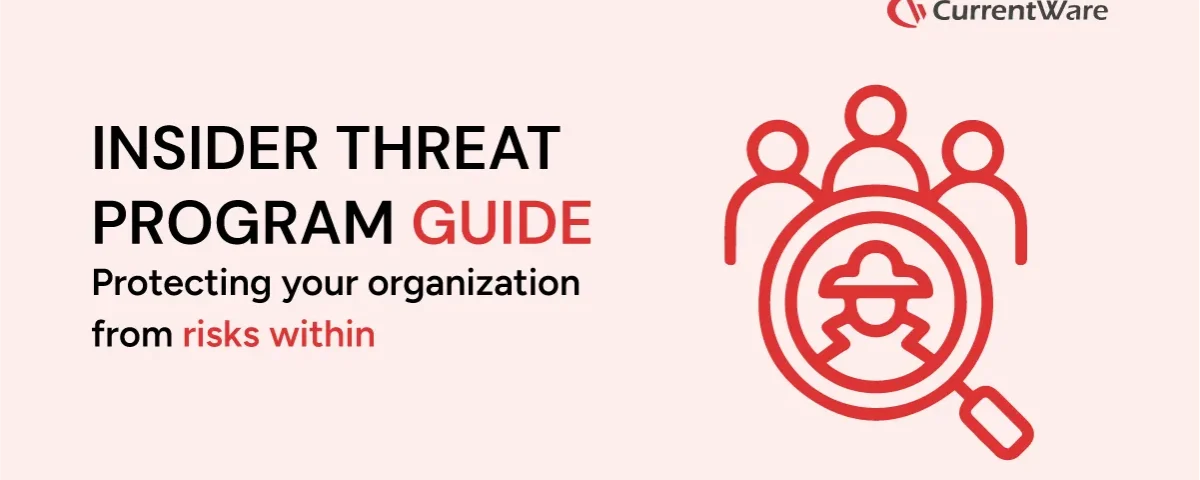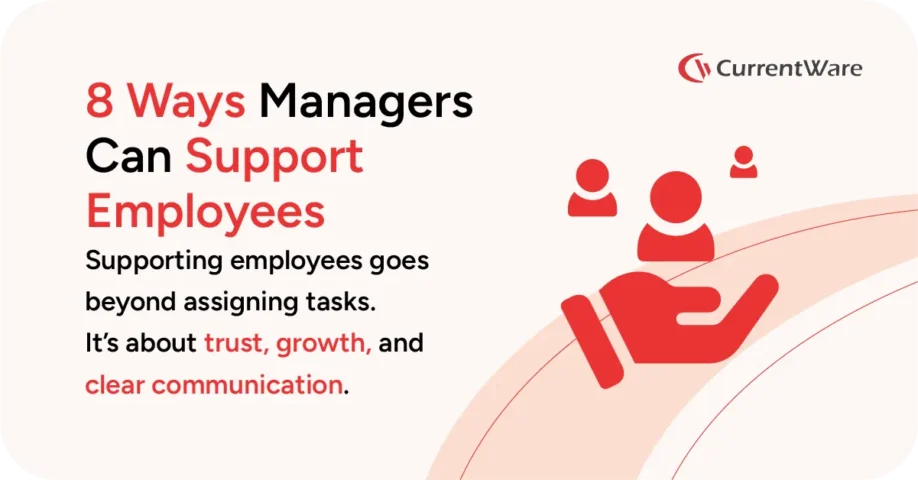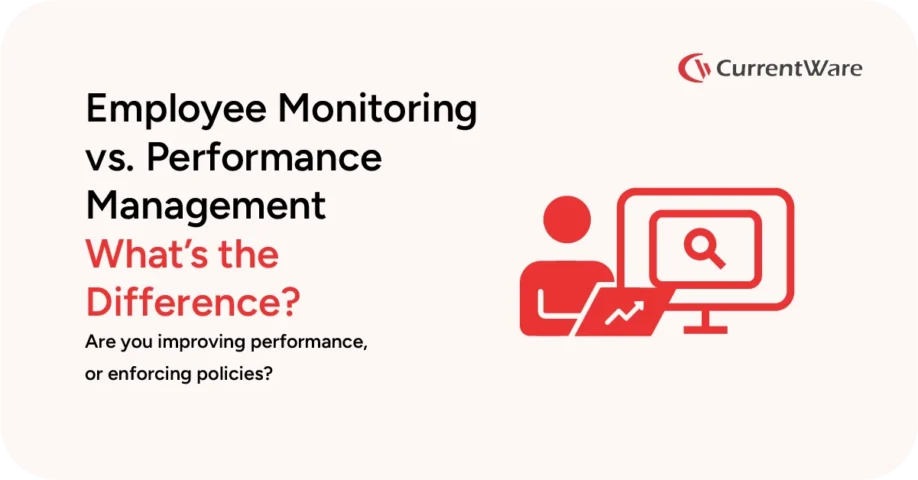Insider Threat Program: A Step-by-Step Guide

According to Cybersecurity Insiders’ 2024 Insider Threat Report, 83% of organizations reported at least one insider attack from 2023-2024. Insider threat management is a crucial practice for organizations aiming to protect their sensitive information, systems, and operations from insider risks.
What Are Insider Threats?
Insider threats are cybersecurity risks that come from individuals within an organization who have authorized access to its systems, data, or resources but misuse that access, either intentionally or unintentionally, to cause harm. These insiders can be current or former employees, contractors, business partners, or others with legitimate access to the organization's information and systems.
Insider threats are generally classified into three distinct categories based on the nature of the threat actor’s behavior and intent:
• Negligent insiders, who may unintentionally cause harm to the organization through careless or uninformed actions such as mishandling sensitive data or ignoring security protocols
• Accidental insiders, who cause security incidents without malicious intent but as an unintended consequence of their actions, like mistakenly sending confidential information to the wrong recipient
• Intentional insiders, who deliberately exploit their access for malicious purposes such as theft, fraud, sabotage, or espionage, often motivated by personal gain, revenge, or ideological reasons.
Secure Compliance and Boost Productivity ?
Enhance Oversight and Control with CurrentWare
- → Real-time tracking
- → Cloud/on-premise support
- → Data for compliance and cost-saving decisions
Who Should Be Involved In an Insider Threat Program?
An effective insider threat program is composed of senior representatives from key units such as IT/Security, Legal, Compliance, Human Resources, and Privacy. These business units provide governance, oversight, and strategic direction. They will also advise on policy, review incidents, and ensure programs align with organizational needs and resources.
| Role/Committee | Responsibilities |
| Board of Directors/Executive Mgmt | Oversight, policy approval, resource allocation |
| Insider Threat Working Group/Committee | Program governance, reviews, strategy direction |
| Insider Threat Program Manager | Program development, coordination, review, reporting |
| Incident Response Team | Detect, respond to, and contain insider incidents |
| Legal, HR, Compliance | Guidance on policy, compliance, personnel screening, and incident handling |
| Training and Awareness Coordinator | Develops and delivers training, updates materials |
| IT/Security Manager | Implements technical controls, monitoring, and incident management |
Also Read: Insider Threat Detection Software - Monitor Employee Activity
What Are the Core Components of an Insider Threat Program?
The core components of an insider threat program include the following key elements:
1. Formalized and Defined Program Structure
This entails having a clear mission statement, directives, governance policies, defined authorities, leadership intent, and allocated budget. A formal program ensures accountability and clarity of purpose.
2. Organization-Wide Participation and Governance
Effective insider threat programs involve collaboration across departments such as IT, HR, legal, risk management, physical security, and senior leadership. A governance body (e.g., steering committee or working group) oversees the program's compliance, sets standards, and approves procedural changes.
3. Policies and Procedures
Well-documented policies define acceptable user behavior, data protection standards, monitoring practices, and response protocols. Procedures cover how to detect, investigate, and respond to insider incidents legally and ethically.
4. Risk Assessment and Asset Prioritization
Regular evaluations identify vulnerabilities and prioritize critical physical and intellectual assets whose compromise would impact the organization significantly.
5. Monitoring, Detection, and Data Analysis
Deploy tools like user activity monitoring (UAM), network defenses, identity and access management, and behavioral analytics to detect abnormal activities indicative of insider threats. This also involves balancing monitoring with privacy and legal considerations.
6. Employee Training and Awareness
Provide comprehensive security awareness training for all employees, specialized role-based training for insiders likely to observe suspicious behavior, and foster a culture of vigilance and reporting.
7. Incident Response and Investigation
Having an actionable incident response plan that defines how to contain, investigate, mitigate, and recover from insider threat events ensures swift and effective handling.
What Are the Human Resources and Legal Considerations of an Insider Threat Program?
Human Resources Considerations
1. Employee Lifecycle Management
HR plays a central role throughout recruitment, onboarding, ongoing employment, and termination, managing records and monitoring behavior that might pose insider threats. This includes background checks, verifying resumes, reference checks, and screening for negative indicators like past violence or disciplinary issues.
2. Training and Awareness
HR coordinates mandatory security and insider threat awareness training, promoting clear communication of organizational policies, behavioral expectations, and reporting mechanisms for suspicious activity.
3. Employee Support and Culture Building
HR fosters a culture of trust and shared responsibility, supporting mental health and addressing job dissatisfaction to reduce insider threat risks. They provide mechanisms for employees and managers to report concerns confidentially and engage in two-way feedback.
4. Handling Incidents and Mitigation
HR participates in investigations, helps mediate disputes, and recommends disciplinary or rehabilitative actions. They are a vital resource in mitigation efforts, including offering remedial training or intervention programs to reduce the threat impact.
5. Confidentiality and Fairness
HR ensures proper handling of employee records and disciplinary procedures to maintain morale, fairness, and legal compliance. They also help protect whistleblowers and ensure procedural due process in actions taken against suspected insiders
6. Compliance with Employment Laws and Privacy Regulations
Legal teams guide the insider threat program to comply with relevant employment laws, user privacy rights, and data protection regulations such as GDPR, including lawful monitoring and employee consent procedures. Most U.S. states permit monitoring under at-will employment, but consent and disclosures are recommended best practices.
7. Policy Development and Legal Review
Legal counsel assists in creating policies that address insider threats while adhering to privacy laws, civil liberties, and whistleblower protections. They review incident communication, such as breach notifications and public disclosures, ensuring legal soundness.
8. Evidence Handling and Investigations
Legal teams work with security and HR to ensure evidence gathered is legally admissible and supports appropriate disciplinary or legal actions. They help define what constitutes sufficient proof before taking action, including termination or sanctions.
9. Cross-Jurisdictional Challenges
Insider threat programs must navigate varying laws across jurisdictions, especially for multinational companies, with stricter regulations abroad (e.g., the EU) requiring local legal counsel input to remain compliant.
Whistleblower Protections and Ethical Considerations
Legal considerations include ensuring whistleblower mechanisms are confidential and protect employees against retaliation and balancing monitoring with respecting civil liberties.
Also Read: Insider Threat Detection & Productivity Solutions for Legal Services
Employee Monitoring
• Detect Risky Activity
Monitor user behavior for suspicious activity with built-in alerts, reports, and dashboards
• Audit Logs
Historical activity logs of login/logout times, internet use, USB activity, and software usage give organizations the data they need to detect insider threats
• Data Movement
Get alerts of potential data exfiltration to removable media devices by individual users
• File Transfers
Track and restrict file movements across portable storage devices, network share drives, and websites such as cloud storage services
• Detect Malicious Insider Threats
Receive real-time email alerts when employees violate your USB security policies
• File Monitoring
Track what data has been copied, created, deleted, or renamed on removable media
• File Transfer Logging
Track file transfers between network share drives, removable media devices, and websites such as cloud storage services to trace data breaches back to their source
Data Leakage Prevention
• Cloud DLP
Block websites and apps to prevent insider threats from accessing unauthorized cloud storage providers. Restrict file transfers to cloud file-sharing services.
• Block USB
Stop insider threats from transferring company data to unauthorized USB storage devices
• Restrict Data Transfers
Block file transfers to portable storage devices based on file extension and file name
Conclusion
Implementing a comprehensive Insider Threat Program is essential for safeguarding an organization's sensitive information, intellectual property, and operational integrity against risks originating from within. By adopting an integrated framework that bridges security, IT, human resources, and legal functions, organizations can proactively detect, mitigate, and manage insider threats before they escalate into costly incidents.


